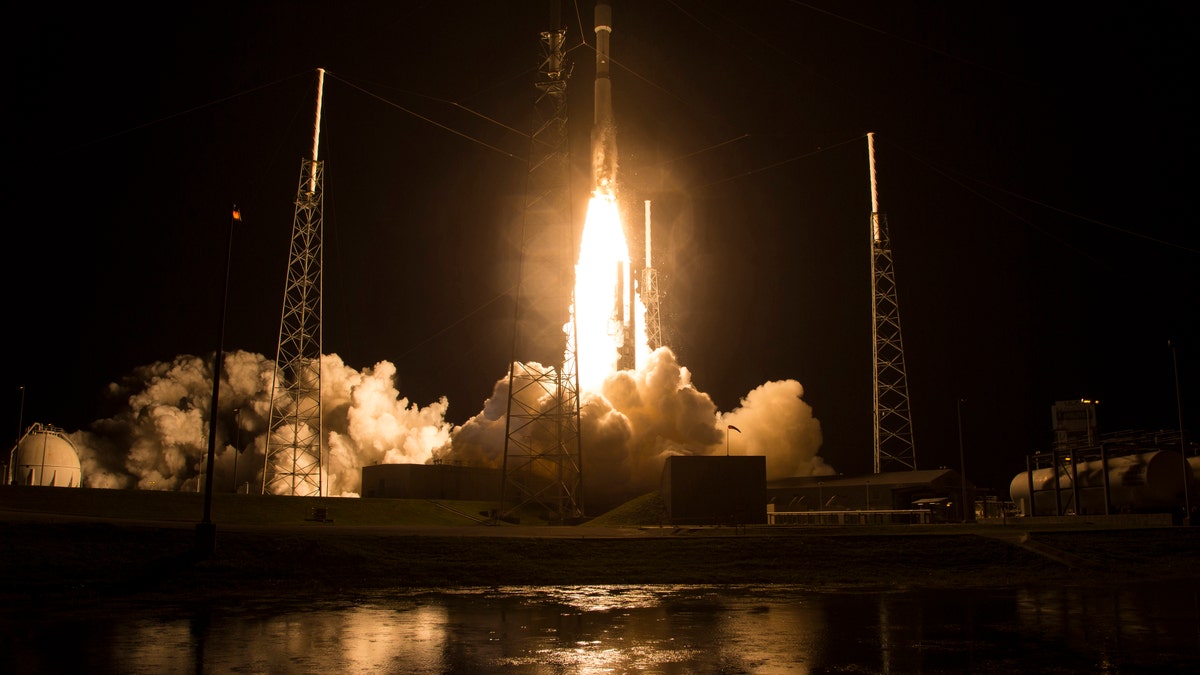
File photo - An Atlas V rocket is shown in this NASA handout carrying NASA's Magnetospheric Multiscale (MMS) spacecraft onboard launches from the Cape Canaveral Air Force Station Space Launch Complex 41, in Cape Canaveral, Florida, March 12, 2015. (REUTERS/Aubrey Gemignani/NASA/Handout via Reuters)
Since 2012, the folks over at NASA have been working on developing a high performance "green" rocket propellant it hoped to one day use as an alternative to the incredibly toxic hydrazine fuel currently in use. According to a press release published in August of 2012, the Washington D.C.-based space agency selected Boulder, Colorado's Ball Aerospace & Technologies Corporation to research the fuel alternative and as of this month, it appears it's ready to show off its work. In an invite sent to media outlets late last week, Ball Aerospace will officially open its doors on March 31 to unveil NASA's Green Propulsion Infusion Mission (GPIM).
Essentially a new spacecraft which is reportedly "safer on the ground and more efficient in space," the GPIM is ready for public viewing after passing a series of functional and environmental tests of both its system and software. Currently, the craft is set for launch in early 2017 where it will have the ability to display its hydroxyl ammonium nitrate-based fuel and oxidizer propellant blend -- known as AF-M315E. Developed by the U.S. Air Force Research Lab at Edwards Air Force Base, the hope is that the fuel will prove to boast a higher performance and will be kinder on the environment than traditional hydrazine fuel.
"High performance green propellant has the potential to revolutionize how we travel to, from, and in space," said the director of NASA's Space Technology Program, Michael Gazarik in 2012. "An effective green rocket fuel would dramatically reduce the cost and time for preparing and launching space missions while decreasing pollution and harm to our environment."
In addition to its cleaner profile, the innovative green propellant features a higher density than hydrazine, meaning it has the ability to be stored much more efficiently. More of it can be stored in propellant tanks of the same volume which results in a 50-percent uptick in spacecraft maneuvering capability. Furthermore, the propellant's freezing point is much lower than hydrazine, and thus requires less power from the spacecraft itself to maintain a suitable temperature.
"NASA and its partners always strive to maintain the strictest safety standards for storage, transport and use of rocket propellants," reads a recent GPIM overview published by the agency. "While all rocket fuels can be dangerous to handle without the proper safety precautions, AF-M315E has significantly reduced toxicity levels compared to hydrazine, making it easier and safer to store and handle. It also requires fewer handling restrictions and potentially shorter launch processing times, resulting in lower costs."
Related: NASA wants to install extra airlock space on the ISS, then lease it to private companies
Aside from cutting costs, use of the green propellant would also make launches safer and faster, potentially altering ground processing time for launches from weeks to a matter of days. On hand during the March 31 reveal will be Ball Aerospace & Technologies Corp. president Rob Strain, associate administrator of NASA's Space Technology Mission Directorate Steve Jurczyk, and Ball Aerospace's principal GPIM investigator Chris McLean, among others.
